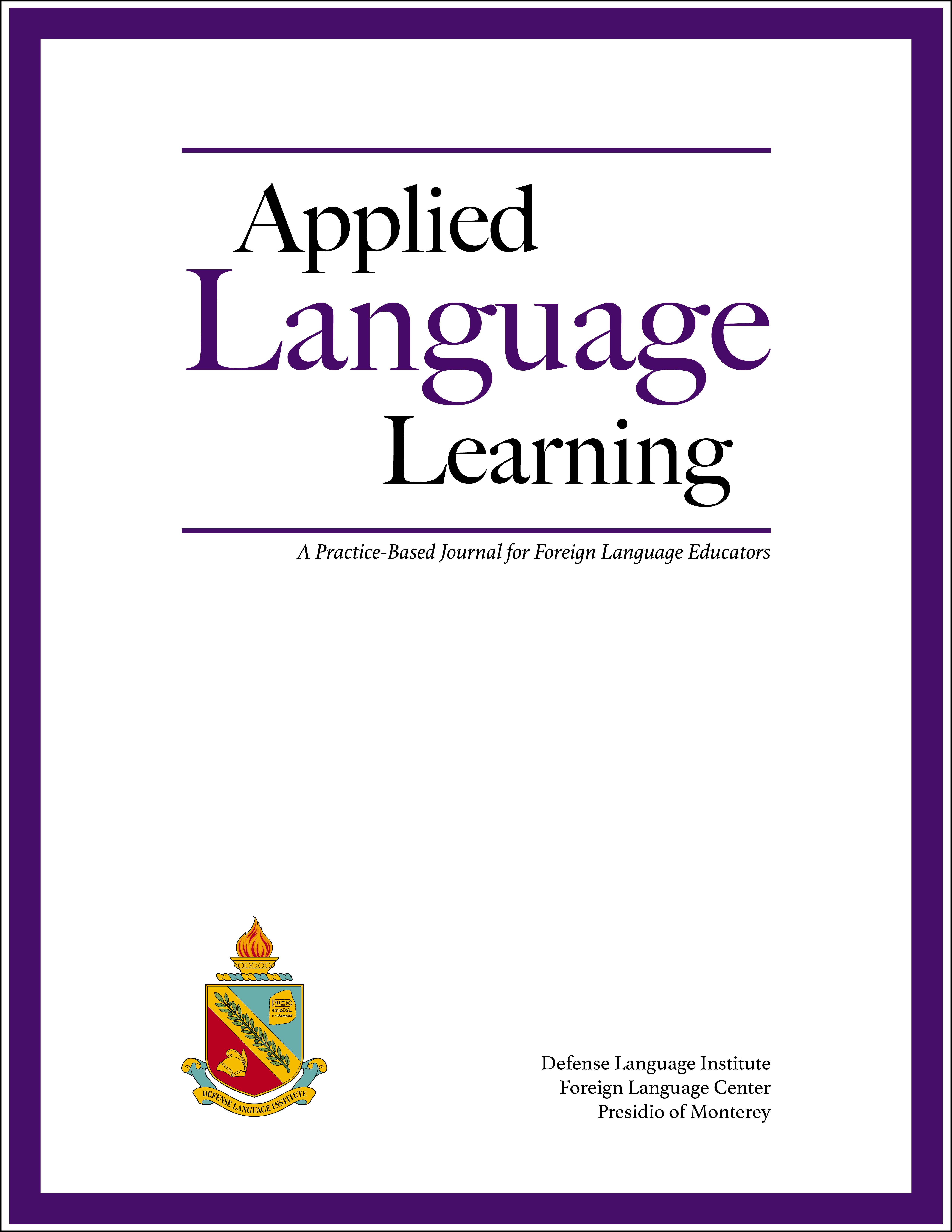
About the Journal
The mission of Applied Language Learning is to promote professional communication within the Defense Language Institute Foreign Language Center and academic communities on adult language learning for functional purposes. The Editor encourages the submission of pedagogy-related research and review manuscripts from areas such as: (1) instructional methods and techniques; (2) curriculum and materials development; (3) testing and evaluation; (4) implications and applications of research from related fields in linguistics, education, communication, psychology, and social sciences; and (5) assessment of needs within the profession.
To see issues of Applied Language Learning published prior to 2025, please visit https://www.dliflc.edu/resources/publications/applied-language-learning/.
Current Issue

• Introduction: Validity Issues in the Assessment of L2 Learner Strategies by Roberta G. Abraham and Roberta J. Vann
ARTICLES
• Verbal Reports as a Source of Insights into Second Language Learner Strategies by Andrew D. Cohen
• Employing a Questionnaire to Assess the Use of Language Learning Strategies by Rebecca L. Oxford
• Validity Issues in Computer-Assisted Strategy Assessment by Carol A. Chapelle
• Using Task Products to Assess Second Language Learning Processes by Roberta G. Abraham and Roberta J. Vann

